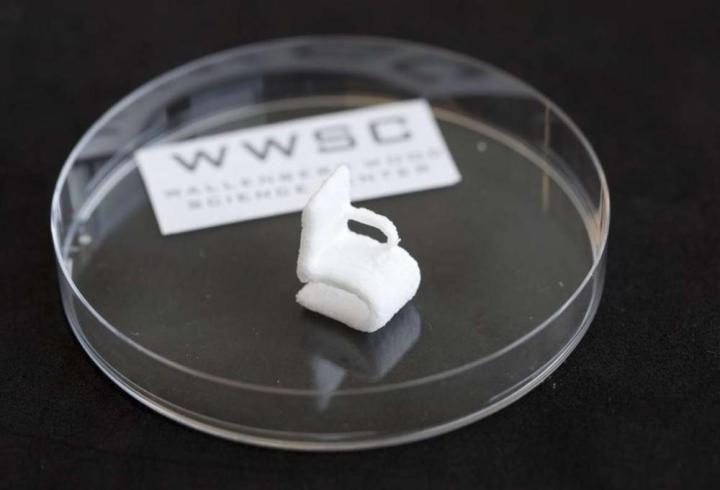
But what if there was a cheap easily available, environmentally friendly raw material that we could use in 3D printing? Well, a group of researchers at Chalmers University of Technology might just have answer to that question.
According to a press release from the university, the researchers were able to print out 3D objects using cellulose obtained from wood pulp as the raw material, rather than the usual thermoplastics or metal powders. On top of that, they were also able to make the 3D cellulose objects electrically conductive by inserting carbon nanotubes in them.
To make this possible, the team mixed cellulose nanofibers in a hydrogel consisting of 95-99 percent water. The cellulose gel was then dispensed with a 3D bioprinter. After that, the next step was to dry the printed gel-like objects without them losing their three-dimensional shape. They did so by freezing the gel-like objects and strategically removing the water, so as to control the final shape of the dry objects.
In order to make the objects electrically conductive, a separate cellulose gel was mixed with carbon nanotubes to create electrically conductive ink after drying. By using the two gels together, one conductive and one non-conductive, and controlling the drying process, the researchers were able to produce three-dimensional electrically conductive circuits from a biodegradable material.
“Potential applications range from sensors integrated with packaging, to textiles that convert body heat to electricity, and wound dressings that can communicate with healthcare workers,” says lead researcher Paul Gatenholm.
We aren’t likely to see this technology used commercially anytime soon, but the development of conductive, environmentally-friendly 3D printing materials is nonetheless an exciting development.
Editors' Recommendations
- Nvidia turns simple text prompts into game-ready 3D models
- AMD is bringing 3D V-Cache back to Ryzen 7000 — but there’s a twist
- AMD’s revolutionary 3D V-Cache chip could launch very soon
- Fighting football injuries with 3D-printed, hyper-personalized pads
- AMD’s 3D-stacked Ryzen 7 5800X3D is ‘world’s fastest gaming processor’


